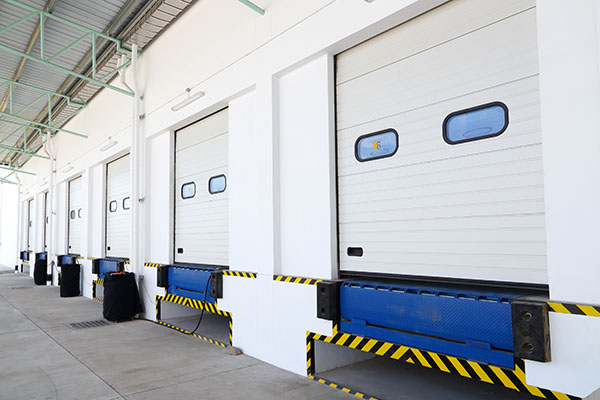

Using Loading Dock Technology And Automation For Safety Management
By Grainger Editorial Staff 2/3/20


There's a lot that can go wrong on a loading dock, so dock safety is an important consideration. With basic loading dock equipment, there's the possibility that human error or poor communication will lead to a loading dock incident. Fall-through, for example, occurs when powered industrial trucks attempt to travel in or out of a trailer that has drifted away from the dock. It's one of the most frequent loading dock incidents, according to ISHN Magazine, and is often caused by miscommunication or human error involving the wheel chocks and vehicle restraints that commonly secure trailers to the dock.
It may not be possible to eliminate mistakes completely, but technology and automation can help companies reduce miscommunication and human error on their loading docks. These newer loading dock technology options include signaling systems, motion sensors, unified control panels and mobile-enabled controls and readouts.
Here are four options and how they work:
- Signaling systems keep employees informed about dock activity and the areas to avoid. They can be placed inside the loading dock, with a green light indicating that a trailer has been secured to the building. At that point, the powered industrial truck operator can safely begin to load or unload the trailer. Once the restraint is unlocked, the lights change colors, and the truck driver can safely pull away from the dock. According to EHS Today, these systems have been upgraded over the last 10 years and now include LED lights that are high enough to be seen over pallet stacks or other obstacles, unlike control lights at the signal-box level.
- Motion-activated lights can alert workers to vehicles moving in and out of trailers. When movement is detected inside a trailer, these systems project blue light in the path of travel, making it clear to people on the dock that a powered industrial truck is exiting a trailer, according to New Equipment Digest. These motion-based sensors can be combined with control boxes that keep vehicle restraints locked until the vehicle comes to a full stop. That way, a dock worker can’t unlock the restraint (which, in turn, would indicate that it was OK for the driver to pull away from the dock).
- When vehicle restraints, levelers and loading dock doors are integrated onto a single control panel, the systems can be programmed to disable the dock leveler and/or door until the vehicle restraint is safely in place, according to Material Handling & Logistics. The control panel prevents someone from skipping safety procedures or using the wrong sequence.
- Some vendors are taking loading dock safety to new levels by adding mobile capabilities to their dock equipment. For example, the manager of a high-velocity eCommerce operation could use a tablet to view dock status across multiple docks and/or facilities and assess whether a restraint is engaged, a leveler is in place or a door is open. That data can then be shared with managers and supervisors to make the dock even safer for workers.
Creating A Safer Dock
Loading docks are hazardous areas in any facility, which means that they're also an area where safety can be improved. New signaling technologies and automation tools may play a role in reducing the miscommunication and human error that can lead to incidents in these busy and important areas.
![]()
The information contained in this article is intended for general information purposes only and is based on information available as of the initial date of publication. No representation is made that the information or references are complete or remain current. This article is not a substitute for review of current applicable government regulations, industry standards, or other standards specific to your business and/or activities and should not be construed as legal advice or opinion. Readers with specific questions should refer to the applicable standards or consult with an attorney.






